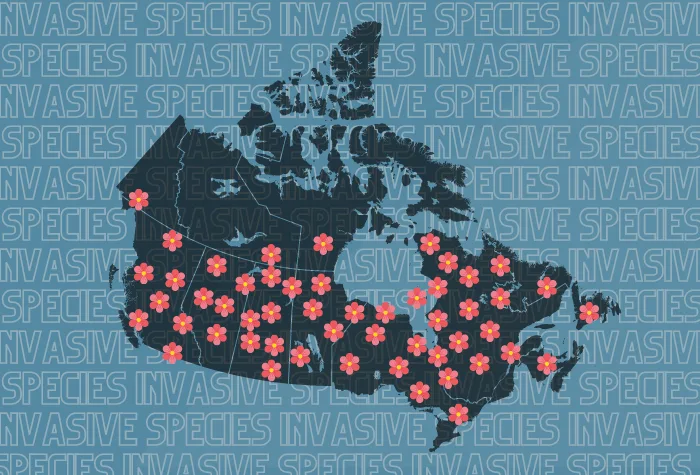
What are invasive plant species? And how much harm can they do?
Not all plants benefit the ecosystem equally: Learn about invasive species and the impact they have on the Canadian landscape.
Now that summer is here and plants are blooming, you'll probably be hearing the term "invasive species" a lot - especially if you're a regular here at The Weather Network, where we keep a close eye on the climate, nature, and the environment.
But what are invasive plant species? And how much harm can they do?
"The obvious part is that the species is not from this region or from this area," Derissa Vincentini, a community science coordinator for the Invasive Species Centre, tells The Weather Network.
"The second part is, once they establish themselves, they cause harm to either the ecosystem, the economy, or the society."
Vincentini says not all non-native species are inherently invasive. To earn that designation, a plant has to influence one of the aforementioned areas, oftentimes causing harm to all three.
Because invasive plants have no natural predators and aren't from around here, they're often fast-growing and reproduce quickly.
We've seen this with garlic mustard, which can overtake native varieties, threatening several North American species, including American ginseng, drooping trillium, false rue-anemone, hoary mountain mint, white wood aster, wild hyacinth, and wood poppy.
RELATED: LEARN MORE ABOUT GARLIC MUSTARD
Then there's giant hogweed, a plant introduced to Canada via Asia that is difficult to get rid of and can cause third-degree burns.
And Canada's iconic sugar maple trees are being put at risk by the European Norway maple. It is allelopathic, meaning the roots exude a toxic substance that hinders the development nearby plants.
"Invasive species often have less to offer the local floral and fauna populations since they did not evolve alongside the native species that are present on the landscape," Vincentini says.
"They often don't contribute to the ecosystem in the same ways that native species do."
Some invasive species - like garlic mustard - look quite pretty when the flowers are blooming and the plants are covering a forest floor - but it's important to remember this plant thrives at the expense of several Canadian-evolved species.
If you think you’ve spotted a plant that didn't originate in Canada, make a mental note of the area and report it online at invasivespeciescentre.ca.
Thumbnail: Custom by Cheryl Santa Maria, made using graphical elements from Canva Pro.
